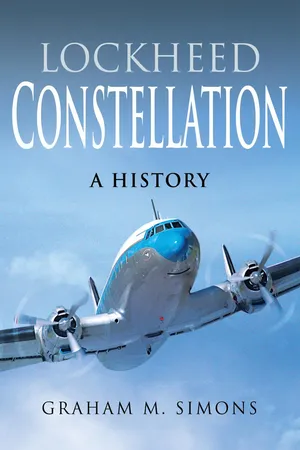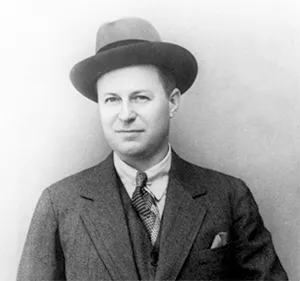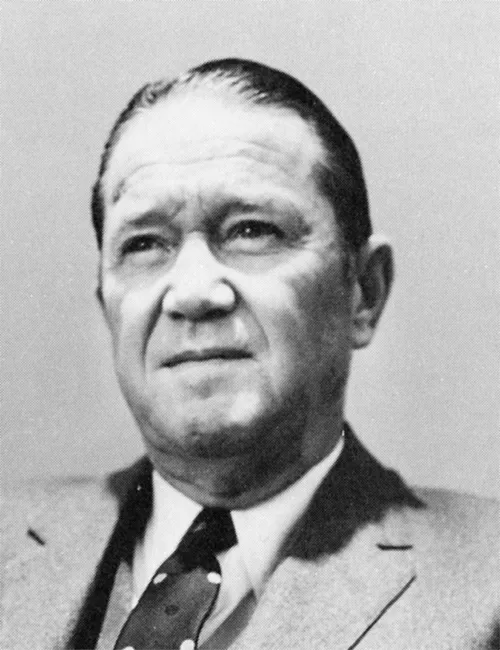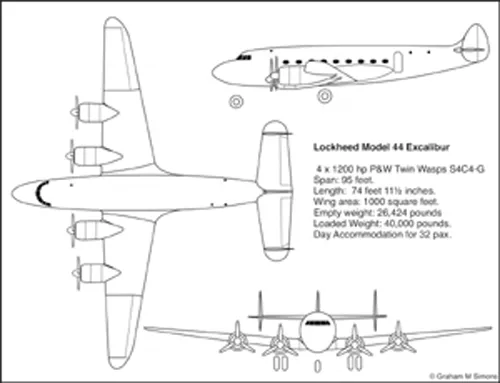![]()
Chapter One
Project Origins
From the early 1930s three major US trans-continental airlines were engaged in a battle for traffic on routes from New York through Chicago to Los Angeles or San Francisco. The struggle was not only between themselves but also with the railroads. The goal sought was to reduce coast-to-coast time and reduce the number of stops. It led United Airlines, American Airlines and Transcontinental and Western Airlines to sponsor not just one but a whole series of highly successful transport aircraft from the drawing-boards of Boeing, Douglas and Lockheed.
Whether an aircraft type was sponsored by an individual airline, as with the Lockheed Constellation by TWA, or collectively by several carriers like its contemporary the Douglas DC-4, the value to manufacturers of feedback from operating experience and ideas for improvement from several vigorously competing user airlines was immense. It was equally valid whether in developing stretched versions of the existing airframe or writing the specification for its successor.
Starting with the Vega of 1927, Lockheed produced a line of single-engined, small-capacity transports of exceptionally clean aerodynamic design for the period. The high-wing Vega was followed by the parasol-wing Air Express designed for Western Air Express, the low-wing Sirius Mailplane, the two-seater Altair and the seven-seater Orion of 1932, the latter being the first production transport aircraft to have a retractable undercarriage. As well as operators in the USA, Orions were used by Swissair, and an increasing number of other European airlines followed and bought from Douglas and Lockheed up to the outbreak of the Second World War.
The Lockheed Company came on hard times following the 1929 stock market crash, a condition exacerbated by its failure to produce new types of aircraft following Northrop’s highly successful, record-setting Vega, Sirius, Altair, and Orion designs. Five years passed without the development of a new kind of aircraft, something that could be fatal in an industry that lives on advances in technology. Finally, Lockheed, with only four people remaining on the payroll, found itself in the hands of federal bankruptcy receivers. The company struggled on, but in April 1932, a federal receiver took inventory, valued the assets, and offered them for sale.
Robert E Gross, Walter T Varney and Lloyd Stearman bought Lockheed on 6 June 1932 for $40,000. Gross became chairman and treasurer; Stearman, president; Carl Squier, who early on had distinguished himself selling Lockheeds, became vice president of sales; and Hall L Hibbard, a graduate of the Massachusetts Institute of Technology and assistant chief engineer for Stearman-Vamey Aircraft, became vice president, chief engineer, and a member of the board. About a year later, Clarence L ‘Kelly’ Johnson, who was to become one of the pre-eminent aircraft designers of all time, joined Hibbard’s staff.
Hibbard’s engineering department produced a series of high-speed, twin-engine transport designs that restored Lockheed’s leadership position. Included was the piston-powered Model 10 Electra, the first of a line of twin-engined transports built to the new formula of all-metal construction with retractable landing gear, flaps and variable-pitch props. The six-passenger Lockheed 12, of which 114 were built followed in 1936 and the eleven-passenger Model 14 Super Electra in 1937, the latter being the first aircraft in airline service to feature fully-feathering propellers, as well as underfloor freight holds and two-speed superchargers. A total of 112 Model 14s were built, as well as a hastily-designed maritime reconnaissance version, known as the Hudson, which was the first US type to be ordered in quantity by the Royal Air Force and saw widespread war service with Coastal Command and other Allied air forces.
Robert Ellsworth Gross (b. 11 May 1897, d. 3 September 3, 1961) Gross was born in Newton, Massachusetts. He attended St. George’s School, Newport and graduated in 1915. In 1932, a group of investors led by Robert and his brother Courtlandt S. Gross bought the Lockheed Aircraft Company from the bankrupt Detroit Aircraft Corporation, renaming it the Lockheed Aircraft Corporation. Robert Gross served as the corporation’s president from 1934 to 1956.
The Model 18 Lodestar, of which 625 were built, was a development of the Model 14 that seated three more passengers. The Lockheed twins were complementary to, rather than competitive with, the larger 21-passenger DC-3, and sold to many smaller operators all over the world, as well as to larger airlines for their multi-stop feeder routes.
Lockheed had searched several years for a large transport development project suitable for commercial marketing and proposed a four-engine design, the Excalibur, in about 1937. It resembled an oversized Lockheed Electra and was capable of flying thirty-two passengers 2,000 miles at speeds from 250 to 275 mph.
Lockheed’s L-44 Excalibur design had started off as a twenty-passenger airliner with a single fin and rudder and a gross weight of 27,500 pounds. It later grew to seat 26-30 passengers with the characteristic twin fins and rudders. Pan American Airways showed interest in the Excalibur. Still, they wanted more speed and capacity, and under their influence, it grew into its final form with triple fins and rudders and a deeper fuselage, similar in shape to the Lodestar. It was slightly smaller than the Boeing 307, with a wing of a 95-foot span and 1,000 square foot area, a nosewheel undercarriage, triple fins and rudders with fabric-covered control surfaces and the same engines as the 307 – four 1,000 horsepower Wright Cyclone GR-I820-G205A radials driving Hamilton Standard Hydromatic airscrews. Up to thirty-six passengers could be seated in a pressurised cabin not very much larger than that of the DC-3 - 30 feet long, 7 feet high and 9 feet 2 inches wide – while baggage and freight compartments totalled 400 cubic feet. The two-spar wing had improved Lockheed high-lift flaps installed, and intended to use a retractable shock-absorbing tail bumper for emergency use in such cases as the nose being raised too high for take-off. The nosewheel was steerable, and there were brakes on all three wheels.
Hall Livingstone Hibbard (b. 25 July 1903, d. 6 June 1996) was an engineer and administrator of the Lockheed Corporation beginning with the company’s purchase by a board of investors led by Robert E. Gross in 1932. Born in Kansas, he received a bachelor’s degree in mathematics and physics at the College of Emporia in 1925. He graduated from the Massachusetts Institute of Technology two years later. He worked for Stearman as a draftsman, before joining Robert Gross’ Viking Flying Boat Company. He served on the board of the newly revived Lockheed Corporation and led the design departments as chief engineer.
The fuel tankage was 1,200 US gallons - or 500 US gallons less than the 307 - while the loaded weight at 40,000 pounds was 5,000 pounds less than that of the Boeing design, having grown somewhat from its original 27,550-36,000 pounds.
The estimated performance was appreciably faster than the 307, a maximum speed of 294 mph at 15,300 feet and a cruising speed of 247 mph at 12,000 feet, although the Excalibur would have had a shorter range. A projected 40-passenger version was studied under the designation L-144 but, in the end, the Excalibur did not get beyond the project stage, despite a provisional order for two placed by South African Airways when it ordered twenty-nine Lodestars for domestic and regional routes in April 1940.
Lockheed considered discussions with Juan Trippe’s Pan American Airlines and built a mockup, but the project was dropped. Lockheed’s attention was focused on the gathering war clouds in Europe; but its keen interest in entering the large transport market at the earliest possible time did not abate.
The Douglas DC-3 was evolved from the DC-2 to satisfy an AAL requirement for modern sleeper aircraft to replace its old fleet of berth-equipped Curtiss Condor biplanes. Because the DC-2 was too narrow for berths, Douglas proposed to widen the fuselage and increase the maximum operating weight to accommodate twenty-one rather than fourteen day passengers.
Around the same time that Lockheed was working on the Excalibur project, across the Atlantic in the United Kingdom, the British Air Ministry, eager to encourage the development of British commercial land machines, issued a pair of specifications for new airliners.
Enter the Fairey FC.1
In typical British tradition, a committee was established in November 1937 under the chairmanship of Lord Cadman to examine the state of British civil aviation and to investigate, in particular, charges of inefficiency in the Air Ministry and within Imperial Airways, then Britain’s primary international airline. The report, published in March 1938 pointed out with some asperity that British constructors, with lucrative military orders at their doors had shown ‘...little disposition to embark upon the costly venture of producing modern civil machines in a speculative attempt to re-enter the lists’ against other countries, in particular the USA, which had gained the initiative.
The report recommended a form of State assistance as a stimulus. The Air Ministry should, the Cadman report said, get together with the airline operators and the constructors, specify requirements, ask for design proposals and select the most promising of each type for development and production.
With remarkable promptitude, specifications were prepared and issued. The report of the Cadman Committee had been completed on 8 February 1938, and seen in advance of official publication by the Director-General of Civil Aviation and others concerned in the Air Ministry - an outline specification for the long-range aircraft was quickly agreed and a constructor chosen.
The short/medium-range project was a more difficult proposition - not only because the British aircraft industry would be starting almost from scratch on such a type, but because it would be competing in a market in which the USA had a long and successful lead with, in particular, the DC-2 and DC-3. The specification and the resulting aircraft would need to show a marked improvement in characteristics and performance in relation, for instance, to the DC-3 and Lockheed 14.
By 17 May 1938, the draft specification was complete, and suitable possible constructors chosen. Copies of the specification (15/38) and a covering letter were sent to Sir W G Armstrong Whitworth Aircraft, the Bristol Aeroplane Company, Fairey Aviation, General Aircraft and Vickers (Aviation). The letter explained the proposed financial assistance, with contributions to prototype development and production tooling, and asked for delivery dates, rates of production and the financial contribution likely to be required. An important proviso in the rearmament circumstances of the time was that the effort ‘must not be allowed to interfere with urgent work on designs for RAF aeroplanes’. Tenders were required within seven weeks.
Vickers refused the invitation more or less immediately and Armstrong Whitworth refused in July because of the proviso. Fairey, General Aircraft and Bristol accepted with Folland Aircraft being included later.
By mid-August, the Directorate of Civil Research and Production - a new department recommended by the Cadman Committee) had made a technical comparison of the four 15/38 designs analysing them also by fitting each ‘on paper’ with Taurus engines, tricycle undercarriages and similar tankages. Not unexpectedly the performances and weights turned out to be very similar, except in the matter of speeds, with, on overall technical merit, the GAL.40 in the lead.
These were still only paper aeroplanes, and initial technical merit was not the only criteria. Both the Director-General of Civil Aviation, Sir Francis Shelmerdine, and the new Director of Civil Research and Production, Major C J Stewart, were very much in favour of getting Fairey into the civil aircraft manufacturing business. Furthermore, Alan C Campbell Orde, operations manager of the most likely home customer, British Airways, had made it clear at the first selection meeting on 9 August that his airline would find it difficult to justify reliance on any but a large and experienced constructor - which left a choice between Fairey and Bristol.
British Airways had been formed late in 1935 in a merger sponsored by Whitehall Securities and Erlangers, the merchant bankers, of United Airways, Hillman Airways and Spartan Air Lines. British Continental Airways, who were competing over similar routes, joined British Airways in August 1936. The original merger followed the report of a 1935 committee set up under Sir Warren Fisher to study British international and particularly European air services.
The committee recommended that one or more airlines in addition to Imperial Airways should receive Government financial aid and be given specific spheres of influence. Imperial Airways, the ‘chosen instrument’ whose primary responsibility was for the Empire routes, agreed to relinquish concessions north of a line London-Berlin. As the second ‘chosen instrument’ British Airways developed services, with a subsidy, to Hamburg, Copenhagen, Malmo and Stockholm, as well as night-mail services alongside Germany’s Deutsche Lufthansa between London and Berlin. The airline also operated an unsubsidised service to Paris alongside Imperial Airways and had been chosen to develop a subsidised service to South America, via West Africa. As there were no suitable British aircraft for these services, the airline bought US aircraft - first, Lockheed 10A Electras and later Lockheed 14s - as well as Junkers Ju 52s for the Berlin night mail. British Airways was, therefore, an obvious customer for the 15/38, as well as the long-haul 14/38 to operate the proposed South American service.
A difficulty was to arise. The Cadman Committee had recommended the development of services in Europe by a strengthened British Airways in close liaison with Imperial Airways - but the Government chose to merge the two airlines into what was to become BOAC, and announced the decision in November 1938. So British Airways was then no longer a free agent in the choice and purchase of new equipment.
By October, only Fairey and GAL were in the likely running. It had been agreed, inter-departmentally, that neither GAL nor Folland should be selected. Fairey had meanwhile been pressing for two prototypes and later in October agreed to build these at the cost of £225,000, plus powerplants and associated equipment which would be provided on embodiment loan, and up to £100,000 for jigs and tools, and the Ministry had promised an order for twelve at the cost of not more than £80,000 each. A provisional contract on these lines was agreed on 12 November and signed on 30 November, but it was not until 23 February 1939 that production details were agreed, with a maximum basic price per aircraft of £76,250, a fixed profit ...



